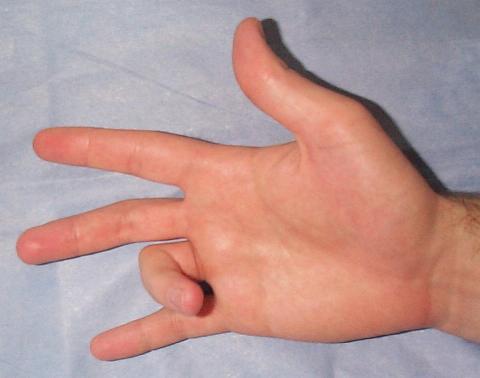By Franciscan Health
What Is Trigger Finger?
Trigger Finger is a common condition causing pain, stiffness, and sometimes popping of a digit. In more severe cases, Trigger Finger, also called stenosing tenosynovitis, can cause the finger to become stuck in a bent position.
While any finger can develop these symptoms, it’s more often seen in the ring finger or thumb.
Risk factors for developing Trigger Finger include diabetes or certain inflammatory conditions, including rheumatoid arthritis and gout. Women also tend to develop Trigger Finger more often than men.
Trigger Finger is sometimes confused with Dupuytren’s contracture, a hereditary condition that causes fingers to contract or bend due to abnormal thickening of the skin.
What Causes Trigger Finger?
Trigger Finger occurs when the tendons of the fingers become swollen and inflamed, making it difficult to move them.
“Trigger Finger is essentially tendonitis of the flexors, which are the tendons that bend your fingers,” said Toni E. Lin, MD, an orthopedic hand surgeon with Franciscan Physician Network in Indianapolis.
In some patients, hobbies, jobs or sports, such as golf, tennis baseball, and softball, that require a repeated grabbing motion of the fingers or thumb, can be linked to the onset of Trigger Finger, though this isn’t the case for everyone.
What Are Symptoms of Trigger Finger?
Trigger Finger often begins with only pain or tender spots in the palm, noticeable at the base of the affected finger. Then, symptoms progress until the finger no longer moves smoothly through the normal range of motion. Patients sometimes refer to this as a “popping,” “clicking,” or “catching” sensation when they try to use their finger.
Finger stiffness may be especially pronounced in the morning or when you’re attempting to grab or grip an object, such as a golf club, tennis racquet, or baseball/softball bat. Eventually, the condition may worsen to the point that the finger becomes stuck in a bent position.
How To Fix Trigger Finger
Fortunately, there are several options for dealing with Trigger Finger.
Primary care physicians may recommend non-steroidal anti-inflammatories (NSAIDs) such as ibuprofen or naproxen, which can relieve pain and inflammation. They may also advise you to wear a finger splint, particularly at night while sleeping.
There Are Exercises for Trigger Finger
Gentle stretching can help with stiffness, however if the finger joints don’t have their normal range of motion, it’s time to see a specialist.
If first-line treatments are no longer providing relief, your physician might recommend a steroid injection, which is what we commonly think of as a cortisone shot.
“Steroid injections can settle down the swelling and inflammation and they can even resolve this condition without surgery,” said Lin.
Typically, injections work better before the fingers have fixed contractures or have chronically been catching.
What Is Trigger Finger Surgery?
If steroid injections do not resolve trigger finger symptoms, surgery could be the next step. Fortunately, the procedure is simple and highly effective.
“Trigger finger surgery is a very quick, a five-to-ten-minute procedure, which can even be performed under local anesthesia,” added Lin. “After the procedure, the locking and triggering are completely gone.”
Your physician can identify steps to relieve pain and inflammation and get you on a path to return the finger’s full range of motion.










